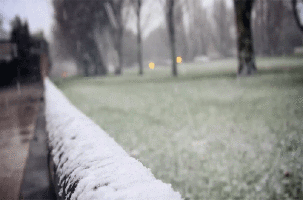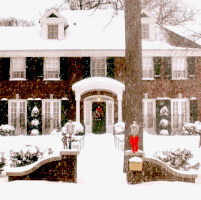The coldest air of the season so far is starting to sweep into the southern United States and may bring the first snowflakes of the season to a few locations in our area this week and beyond. Unlike the cold shots this fall that came in then left after two or three days,
this cold air is likely to last much longer this time around and may be more of a shock due to lower sun angle and the sheer magnitude of the arctic air. Unfortunately, the  computer models are not handling the cold outbreak very well. They all agree the cold is coming and will stay a while. But when you have a pattern like this, they can’t seem to tag the disturbances moving into the cold air very well. These disturbances are called Alberta Clippers. An Alberta Clipper is a storm system during the winter months that originates from the Canadian province of Alberta or close by…sometimes the system can originate from Saskatchewan, Manitoba or even Montana. The term “clipper” originates from the clipper sailing ships because of their quick speeds.
computer models are not handling the cold outbreak very well. They all agree the cold is coming and will stay a while. But when you have a pattern like this, they can’t seem to tag the disturbances moving into the cold air very well. These disturbances are called Alberta Clippers. An Alberta Clipper is a storm system during the winter months that originates from the Canadian province of Alberta or close by…sometimes the system can originate from Saskatchewan, Manitoba or even Montana. The term “clipper” originates from the clipper sailing ships because of their quick speeds.
Thus, an Alberta Clipper is a quick-moving winter storm system originating from Alberta, Canada that gets caught up in the Polar jet stream and travels southeastward into the U.S. A clipper will usually bring smaller amounts of snow (generally 1-3 inches) because of its speed and lack of deep moisture, but higher amounts are certainly possible. Along with the quick burst of snow, a clipper generally brings colder temperatures and often ti mes gusty winds. This is what will be affecting our weather over the next couple of weeks at least…maybe much longer. Another player in our weather right now is the Polar Vortex. Remember I stated that the Clippers get caught up in the jet stream and ride it into the U.S. That Polar jet stream band near the North Pole essentially confines the Polar Vortex.
mes gusty winds. This is what will be affecting our weather over the next couple of weeks at least…maybe much longer. Another player in our weather right now is the Polar Vortex. Remember I stated that the Clippers get caught up in the jet stream and ride it into the U.S. That Polar jet stream band near the North Pole essentially confines the Polar Vortex.
When the jet stream near the pole buckles as it is doing now, the Polar Vortex can shift its position farther south and allow frigid air to spill toward mid-latitudes. It is aided by the clipper storms and their circulation that helps draw colder air southward. Rather than the Polar jet stream making a quick plunge and then retreating northward, the southward dip will linger for one to two weeks or longer depending on the blocking that will hold it in place over us. So we can expect a series of Alberta Clippers to move through the region over the next week or so. Each one may have different tracks and different amounts of moisture. Some of them may not bring anything but a  few flurries, while others could put down an inch or maybe a little more.
few flurries, while others could put down an inch or maybe a little more.
The thing is that none of these type systems will bring us the bigger snow fall. For a bigger storm to happen we’d need the polar and subtropical jet streams to meet up and inject Gulf moisture into the colder air. We’ve got the colder air, but now we need to watch to see if those two jets phase together at some point. I am thinking that will happen over the next few weeks but the question is when. In the meantime, any snow that falls with these clipper storms will be nice to look at and will probably not cause too much in the way of travel issues. The cold air still looks to hang on through most, if not all of the month of December. The key dates where we could see a little more snow are the 12th, the 15th, the 19th, and Christmas Eve. Christmas is still a ways out but I like our chances for a white Christmas this year. I’m just saying the chances are better than usual. We will continue in the active pattern and we will have lots of snow chances between now and Christmas. In the meantime, have blankets and winter jackets on hand and be prepared to turn on the heat. Keep fresh water and shelter for pets and observe all of the normal preparations for cold weather. Snow lovers should take heart. I expect we all should be able to make snow cream before long. Feel free to comment on this post and be sure to hit the “Like” button at the end.






